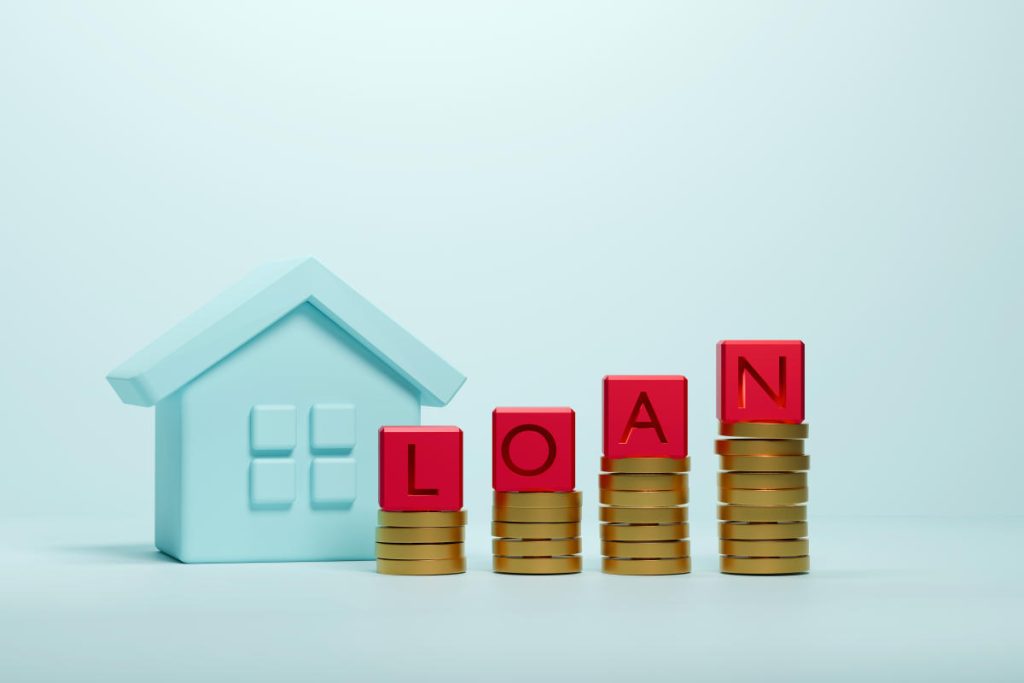
Conventional loans are the main engine driving the home mortgage machine and are the go-to loan product for most borrowers. In fact, over 77% of all mortgages originated in 2023 were conventional loans, according to government data.
Conventional mortgages are not insured by the government and have their own specific requirements, which often vary by lender.
Are you preparing to apply for a mortgage loan? Here’s what you need to know about conventional mortgages in 2025.
Read more: The different types of mortgage loans
In this article:
A conventional loan is not insured or guaranteed by a government agency, and it can be either conforming or non-conforming. Conforming loans, which make up the bulk of conventional mortgages, are loans that adhere to the standards set out by Fannie Mae and Freddie Mac — two government-sponsored enterprises (GSEs) that purchase conventional mortgages, sell them to investors, and help keep the mortgage market liquid.
Non-conforming loans don’t have to adhere to Fannie or Freddie’s rules, and lenders have more leeway in issuing these. They may allow for bigger loan amounts, non-traditional properties, or more flexible credit requirements.
Dig deeper: How non-conforming mortgage loans work
If you are looking to buy a home or refinance a mortgage and have a decent income, a good credit history, and average debt, a conventional loan is probably right for you. A conventional loan may also be a good idea if you need a particularly large loan amount, have a tricky financial situation, or need to buy a unique property (such as an agricultural farm with more than 10 acres).
By contrast, other types of mortgages like FHA and USDA loans (more on those later) cater to those who may have lower credit scores, limited savings, or low-to-moderate income.
Read more: 15-year vs. 30-year mortgage — Which should you choose?
Buying or refinancing a home with a conventional loan allows you a great deal of flexibility. Home buyers with typical credit scores, income, and debt loads will likely qualify, and there are loan programs such as HomeReady and Home Possible that allow for down payments as low as 3%.
There are also many lenders to choose from, and you can pick between both fixed- and adjustable-rate options, as well as a variety of terms. While 30-year terms have historically been the most common, you can also choose a 20-, 15- or 10-year loan term.
Note: While your mortgage payment will be higher with a shorter mortgage term, these allow you to pay off the loan faster and significantly reduce the amount of interest you pay in the long run. You will also gain home equity faster.
Dig deeper: How to get a mortgage with only 3% down
Conforming loans are conventional loans that meet Fannie Mae and Freddie Mac’s standards. They’re limited to $806,500 for a single-family home in most counties but can go as high as $1,209,750 in higher-cost markets.
And while the minimum down payment you’ll need to make on these loans is 3%, putting down anything less than 20% will typically mean paying for private mortgage insurance (PMI). This costs about $30 to $70 per month for every $100,000 you borrow.
Read more: What is a conforming loan, and how do you qualify?
Jumbo loans exceed the conforming loan limit. They usually have higher costs than other loans and may require a higher credit score, significant cash reserves, and a 20% down payment or higher.
Learn more: How to buy a higher-priced house with a jumbo loan
Fixed-rate mortgages have a set interest rate for the entire loan term, meaning your rate on Day 1 will be the same on the day you pay off your loan. This helps keep your mortgage payment consistent and predictable.
Keep learning: How does a fixed-rate mortgage work?
Adjustable-rate mortgages have interest rates that change over time. You might get a lower interest rate than fixed-rate products offer at the start, but then the rate can go up or down after a few months or years have passed. The rate then adjusts annually or every six months after that.
With an adjustable-rate mortgage, also called an ARM, your rate can increase or decrease. It all depends on what index rate your loan is based on and where that rate goes. There is a limit, though. Many mortgage lenders place a cap on how high your rate can go with each adjustment and over the life of your loan.
Read more: What is an adjustable-rate mortgage (ARM)?
Many lenders will originate a conventional loan and then re-sell it to Fannie Mae or Freddie Mac to gain liquidity (therefore enabling them to offer new loans to new borrowers). Sometimes, though, lenders will opt to keep certain loans on their own books instead. These are called portfolio loans.
Since portfolio loans aren’t beholden to Fannie and Freddie’s requirements, lenders have more leeway in setting the terms and requirements. This can make portfolio loans a good choice for borrowers with unique financial situations that could make conforming loans out of reach.
Dig deeper: How a portfolio loan can help you buy a home
A subprime mortgage is a type of loan generally offered to borrowers with credit problems. They charge higher interest rates than other loans, as they’re riskier for lenders to originate and keep on the books. They often come with adjustable interest rates that change over time.
Most mortgages are what lenders call “amortized” loans, which means the total amount of interest and principal is added up and then spread evenly across the months and years of your loan term.
With an amortized loan, the bulk of your early payments will go toward interest. By the end, most of your payments will be paying off your principal balance.
Conventional loans may make up the bulk of mortgage originations, but there are other loan options out there, too — namely, government-backed loans. These mortgages are guaranteed by various governmental agencies, meaning if a borrower defaults on their loan, the agency will pay the lender for its losses.
The three types of government-backed mortgage loans include:
FHA loans are loans insured by the Federal Housing Administration, and they’re popular with first-time buyers. They require as little as a 500 credit score with a 10% down payment, or a 580 score with 3.5% down.
Dig deeper: FHA loan vs. conventional loan — Which should you choose?
A VA loan is a mortgage insured by the Department of Veterans Affairs. It is for military service members and veterans only, and borrowers must meet certain days-of-service requirements to qualify. VA loans require no down payment, charge relatively low interest rates, and have no hard credit score minimums.
Read more: How to choose between a VA loan and a conventional loan
USDA loans are insured by the U.S. Department of Agriculture and are available for eligible rural properties. They also come with income limits. You can see if a home you’re considering is USDA-eligible using this map tool.
Like VA loans, USDA mortgage loans require no down payment and have no credit score minimums set by the government. (Lenders, however, can set credit minimums as they wish.)
Keep learning: USDA loan vs. conventional loan — How to know which is right for you
Specific loan requirements vary by lender, but generally, conventional loans require:
-
A debt-to-income ratio of 50% or less, though many lenders want a DTI ratio of 41% or less.
-
A down payment of 3%. Some lenders even offer 1%-down payment programs for first-time buyers. You will be required to purchase private mortgage insurance if your down payment is under 20%.
-
A FICO credit score of 620 or higher.
Read more: The best mortgage lenders for first-time home buyers
-
Down payment as low as 3% for first-time home buyers and just 3% equity for qualified loan refinancing.
-
You can opt for an adjustable-rate mortgage.
-
With a down payment of 20% or more, you can forgo private mortgage insurance.
-
Higher loan limits than FHA loans.
-
Available as jumbo loans if you want to purchase a higher-priced property.
-
Flexible terms are available to first-time home buyers and Native Americans.
-
Can also finance home renovations, energy-efficient improvements and the purchase of manufactured homes.
-
Potentially higher credit score requirements than with FHA or USDA loans.
-
You may have to pay PMI if your down payment is below 20%
-
Can be harder to qualify for than other loan options.
-
May have higher interest rates than government-backed options.
Learn more: What is private mortgage insurance (PMI), and how much does it cost?
Conventional loans can be good because many lenders let you put only 3% down. They also often have more term options than other types of home loans, such as a 20-year term. However, it still might be worth looking into FHA, USDA, or VA mortgages, particularly if you have a low credit score or little cash saved up.
No, you don’t have to put 20% down on a conventional loan, though it will likely mean paying for private mortgage insurance if you don’t. This adds about $30 to $70 monthly to your mortgage payment for every $100,000 you borrow. Technically, conventional loans allow for down payments as small as 3%.
If someone has a strong credit score and low debt-to-income ratio, they might want a conventional loan because they can get a relatively good rate, make a small down payment, and enjoy higher loan limits than other programs typically offer. With a conventional loan, you can put down as little as 3%, whereas even FHA loans require 3.5%.
Conventional loans can be more challenging to qualify for than other mortgage programs because they lack the government’s backing, which protects the lender in case you default on your loan. Depending on your mortgage lender, they may require higher credit scores and lower DTIs to qualify.
That depends on your goals and finances. A conventional loan can be better if you have a great credit score, a low debt-to-income ratio, and plenty saved up for a down payment, as this would allow you to skip private mortgage insurance. An FHA loan may be better if you have less-than-stellar credit or low to moderate income.
One of the main downsides of a conventional loan is that private mortgage insurance (PMI) is usually required if you make a down payment of less than 20%. This adds between $30 to $70 to your monthly payment for every $100,000 borrowed. Fortunately, you can request to cancel PMI once you have 20% equity in the house, and the lender must remove it when you reach 22% equity. VA and USDA loans don’t require monthly mortgage insurance payments, but FHA loans do.
Having a credit score under 620 will typically make you ineligible for most conventional loans, as will a DTI ratio of over 50% (sometimes 41%, depending on the lender). Not having enough for at least a 3% down payment can also disqualify you.
This article was edited by Laura Grace Tarpley.
